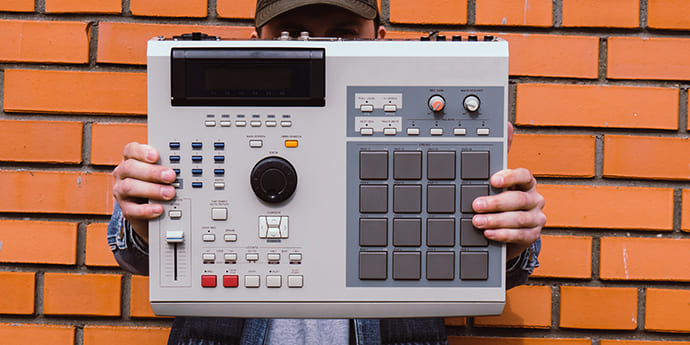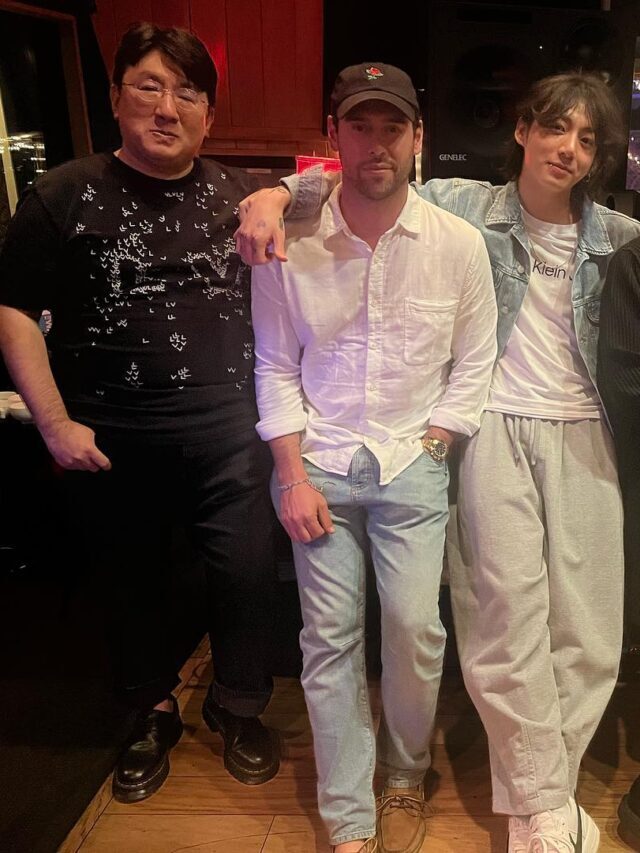Historically, the heaviest bass end of trap music has evolved most over the years. From Flosstradamus and SLANDER’s heavy-hitting leads to head-bobbing rap beats, this style is a large part of the EDM scene.

Globally, EDM playlists have been dominated by trap music. Although trap songs differ significantly from one another, a few core elements remain the same.
Table of contents
Things to consider while creating trap beats and some tips on how to make trap beats :
We will be going over some of the most important things you need to consider when creating trap music in this article. Here are some pointers:
We’ll start with one of trap beats music’s essential elements:
1. 808’s
The presence of sub-bass during drops is one of the essential elements of trap beats music. Here is a shortlist of some simple suggestions on boosting your Sub to beat during critical moments.
Pick a good 808 sample –
One way to make sure your sub-bass sticks out is to choose from a selection of good 808 samples.
Dropping a high-quality sample into your DAW’s version of a sampler is a great starting point. Add drive, saturation, and even some overdrive to make sure you get some upper harmonics as well. Finding the fitting 808 is a critical step when creating a trap song, but now you’ll have to choose the right kick and snare while creating a trap beat.
This will ensure your Sub is heard on speakers, laptops, or even phones. Don’t be afraid to EQ your sound to taste! Just make sure you don’t boost the low end, as this may cause phasing issues down the line.
In trap beats, trap music, you use sidechain compression on your 808’s to duck the sub-bass just as the kick hits so that the lower end frequencies on either one don’t cancel each other out.
By doing so, you not only prevent phasing, but this could aid in your mix by making sure your bottom end doesn’t get too “muddy.”
Pro Tip: If you use Ableton, experiment with the lookahead setting. This way, the compressor can see further ahead and compress “slightly better.” Be careful. However, as long lookahead times can squash the life out of your signal.
USE A SATURATION SEND
Another unique way of processing your bass would be to construct a send or return where you’ve placed a frequency-splitting EQ on it alongside a saturator to add upper harmonics.
Look at the pictures below. Here, we’ve created an effect rack (in Ableton) and set one chain up as a high pass to cut out the lower frequencies (Below 100hz) and another as a low pass (Cut everything above 100hz).
Mute the lower frequencies by making sure the little speaker icon is greyed out and place your favorite saturator onto the high pass EQ, and voila! Send your sub-track to this return, and experiment with the amount of saturation and input gain you throw at it.
This will help your sub-cut through and allow it to be heard through smaller speakers, so your booming Sub will still be perceived even when the speakers don’t extend to the lower part of the frequency spectrum.
This can often make or break your track, so the next section will go over some tips to help you make tough decisions.
Free Trap Music Tracks or free trap beats are easily available on the internet. Keep it real with some collective collections of dance music tracks dedicated to the popular Hip-Hop sub-genre, trap.
2. Picking The Right Kick and Snare
There aren’t many elements to a song that stands out as much as the kick and snare. Both are hard-hitting pieces of your music that you should take extra care of, especially when working in the trap genre.
KICK
When choosing your kick, you want to make sure it’s in the same key that you’re writing in. A quick and easy way to do this is to drop a tuner or an EQ on the same track as your kick, hit play, and see where the most prominent peak is (if you’re going the EQ route).
That’s the fundamental note of your kick. The general rule of thumb here is to make sure the kick is tuned to the same key you’re working in. Meaning, if you’re writing in F Minor, your kick’s fundamental should be the note F.
It’s also essential to have suitable mid-range frequencies on the kick, also known as the “knock,” so that it will cut through the booming 808’s in your song.
This is extremely important as these two elements will be blended.
The kick/808 combination is necessary when working in this style. It’s one of the key features that stand out in the trap genre.
SNARE
Choosing your snare is just as important as the kick you decide to use in your song. A trap that pops and is unique will catch the listener’s ear.
Here, it’s important to layer your snare to create a sound that has a substantial hit, full-body, and stands out against the rest of your arrangement but still blends well in your mix.
Typically, you’ll need to layer a few snare sounds to achieve this. Because you want your snare to stand out in this genre, you’ll want to have at least two layers that take care of the lower end of the spectrum (entire body end) and the higher (airy) end of the spectrum.
It’s unnecessary to sit for hours to choose the “perfect” kick or snare, so try to avoid getting hung up here – you can always replace it later. Don’t forget how useful an EQ can be used here to alter your sound, so pick something that sounds right and play around with it.
Remember to make sure that the snare compliments the kick and to choose samples that reflect that. This means selecting sounds that seem like they go together.
A quick way to ensure this is to pull samples from within the same sample pack. Your ear will develop over time, and you’ll get a better feel for what fits as you create more music, so don’t get too frustrated over this step.
Picking which kicks or snare to use is only the start. How you go about fitting your kick and snare into your mix is almost just as important. Let’s get into how you go about doing that.
Now that your kick and snare are fitting better in your mix. Overall, you’re going to want to process them together to pop. In trap music, this is accomplished several ways. Let’s move on to how you should process your drums to make this happen.
You can download free trap beats on storyblocks.com. Along with this site there are several other sites which helps in trap beats free downloads.
3. Sidechain
When working in trap music, sidechain compression is your best friend! Sidechain compression simply ducks or compresses the volume of a sound so that frequencies that may have the potential to clash don’t.
Generally speaking, a ghost kick is used alongside a compressor to achieve this effect.
4. Processing Your Drums
One of the biggest mistakes a new producer can make is over-processing their drums and drum busses. Drums, especially bass music, can make a drop stand out, so it’s essential to get them right.
Here are a few quick tips to make your drums stand out. Remember, the drums, next to the 808, are one of the essential elements in this genre of music, so you’re going to want to take extra care of them.
PLAY LIKE A DRUMMER
Try programming or placing your samples with this in mind: Would a real drummer be able to play this? A drummer only has two arms and two legs to work with. A quick way to make your track sound busy is to add in too much drum action.
This is especially true in trap music. The main elements happening simultaneously during the drop are the kick, snare, hi-hats, drum fills, sub-bass, and the lead synth.
If you add in too many drum sounds, it would feel way too cluttered and distract the listener from what you’re trying to let them hear: the bass and the lead. Drumbeats add energy to your beats and that trap beats downloads links are readily available on the internet. As a musician you need to keep in mind that some trap beats required to pay fees and some of them are royalty-free (free of cost) trap beats.
USE GLUE COMPRESSION
Glue compression is perfect for pushing your drum pieces together so that they seem more cohesive and, essentially, glued. Try adding this to your drum group and keep a slower attack and a quick release – you don’t want this compressor to squash the dynamics of your sound.
Think of it as a nice massage to get your drums to sound glued together, but nothing more than that.
USE PARALLEL COMPRESSION
Parallel compression is essentially a send or a return where you squash your drum sound to make them seem punchier, livelier, and larger than life. Utilizing this type of compression can yield some significant results.
This is achieved by setting up a drum bus or a return, EQ out the low end below 50hz, place a compressor on it and set your settings to taste as you send your drums to the bus.
Many third-party compressors have their settings for achieving this type of compression, but if you don’t have access to any of these, here are some solid settings used throughout the trap genre to get you started.
- Ratio: At least 3:1 or higher, you want to compress, or squash, your sound
- Threshold: As low as you can go – watch for the compressor to begin to release at the end of sustained hits
- Attack: Fast (2ms or faster) if you’re looking to thicken up your drums or Slow (10ms or slower) for punchiness
- Release: Auto or slow (100ms and up)
Make sure the overall volume of your track isn’t changed as you add in the importance of the compressed sound. There are various kinds of Soundclick trap beats available on SoundClick. As a musician, if you are serious about your business, make sure you take help from it.
SATURATE YOUR SNARE
A great way to get the best bang out of your snare is to saturate it. Place a saturator onto your snare channel and pump up the drive knob by a few dBs.
Now, on the output knob, subtract the exact amount you pumped up your signal by. Cross compare the amount of DBS the snare hits with the saturator on and then off, and notice the difference.
If done correctly, you can save a few dBs of headroom while the perceived volume of your snare remains the same! Trust your ears here. If you perceive the book to go down, you’ve most likely saturated it too much.
In trap music, having properly processed drums is a must. Try these tips and tricks out and watch your drums pop during your drops.
Now that you’ve got booming sub-bass and clean-sounding drums let’s go over some ways to get your lead sound to cut through.
5. Make A Huge Lead Sound
Sound design is arguably one of the essential pieces of your production – especially in trap music. Huge leads that thump along to booming sub-bass during the drop are the defining characteristics of this genre.
Because of this, sound design is essential and makes your track stand out above the rest. A significant lead will set you apart from the competition, so let’s dive into a few quick tips to help improve your sound.
Now, we understand that sound design isn’t the easiest thing to learn overnight. So, among all the trap beats available, it is a little tough to conclude which is the best trap beats among all.
Above you’ll see an effects chain for one of our presets in the Nightmares Vol. 2 pack for Serum. Adding in a big reverb, a multiband compressor, and distortion are common effects for a lead in this genre.
Experiment with your favorite synths and dive into presets to start creating your own!
The bigger the lead sound, the harder your song will drop. Listen to NGHTMRE and Dillon Francis on their track, “Another Dimension,” and focus on the lead in the drop.
Notice that the soundscape is composed of just the kick, snare, Sub, and a vast, reverb-heavy lead sound. You only need a few elements in the drop to make a banger, and that’s why a significant lead is so important.
Utilize your reverbs, delays, and other effects to create ample space for the sound to fill as well!

If the sound design isn’t your strength, we have a masterclass that dives into creating a sound from scratch, start to finish, in Serum – one of the most prominent software synths out there.
Every great trap song builds tension as the song goes on, right up until the drop where your huge lead and heavy bass come in. Let’s go over some ways you can add hard trap beats to your builds.
Pro tip – Try to get your favourite trap beats in an offer. There are several trap beats for sale during festive time. Purchase them at an affordable price and make music of your choice. Refer https://traktrain.com/ and get some affordable deals out there.









